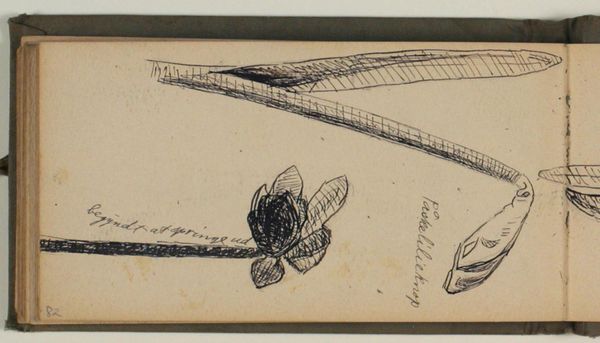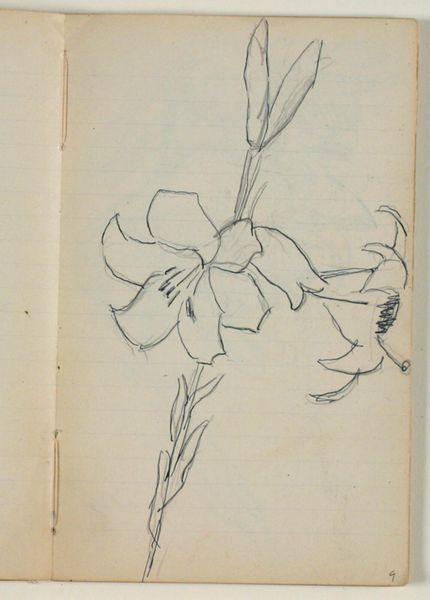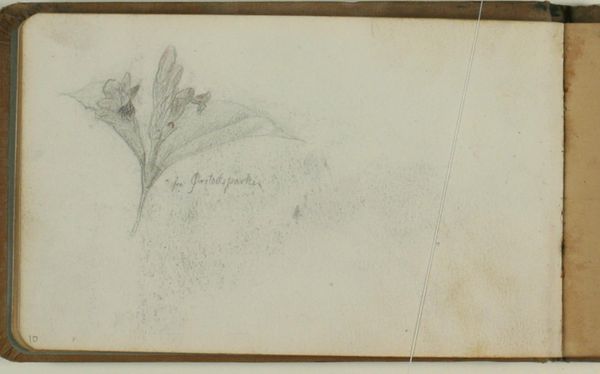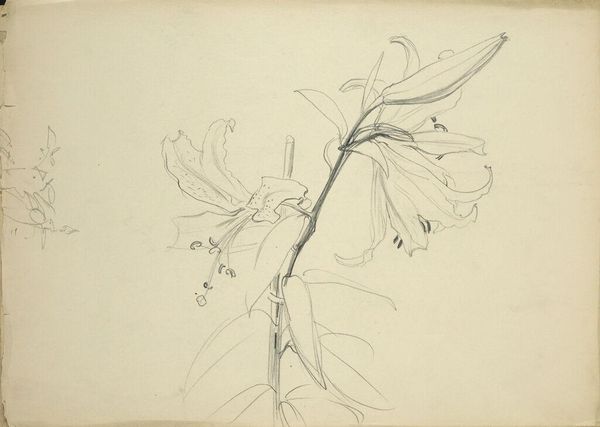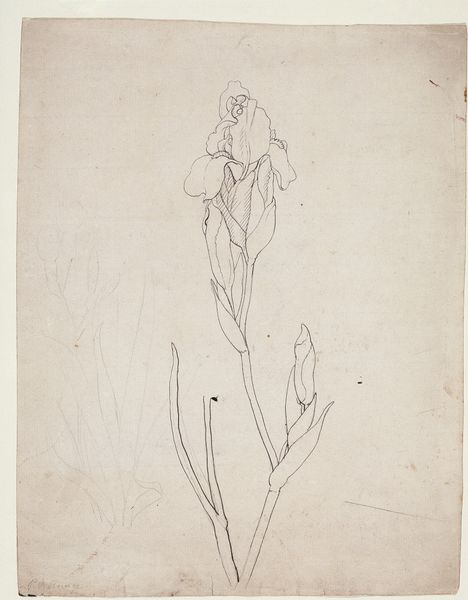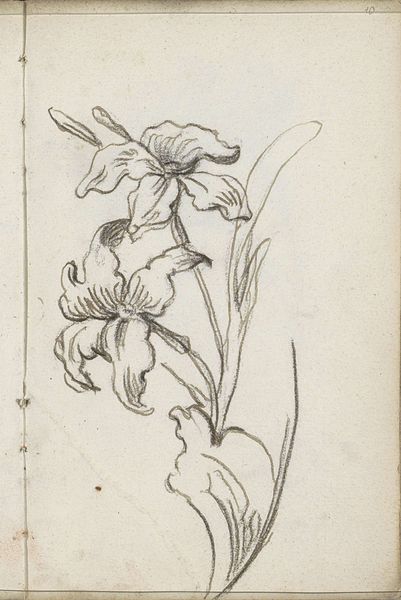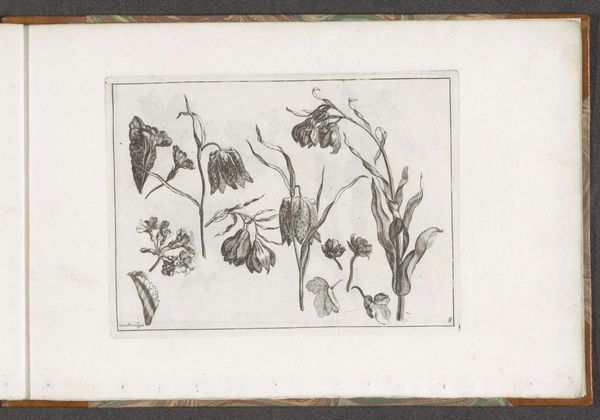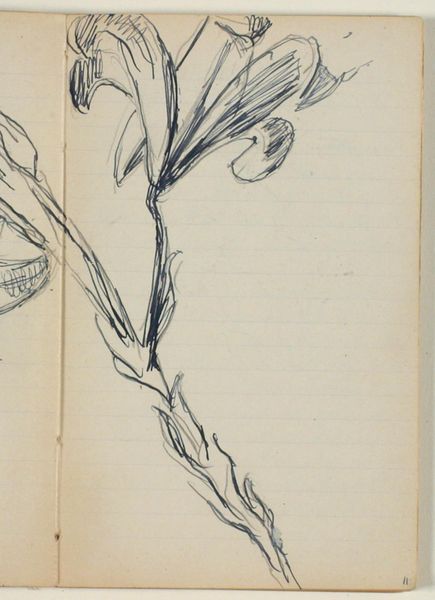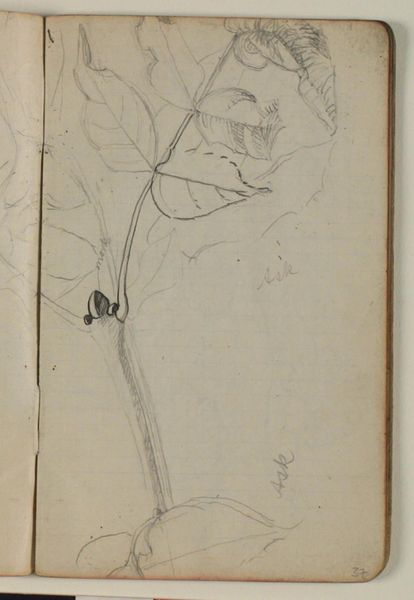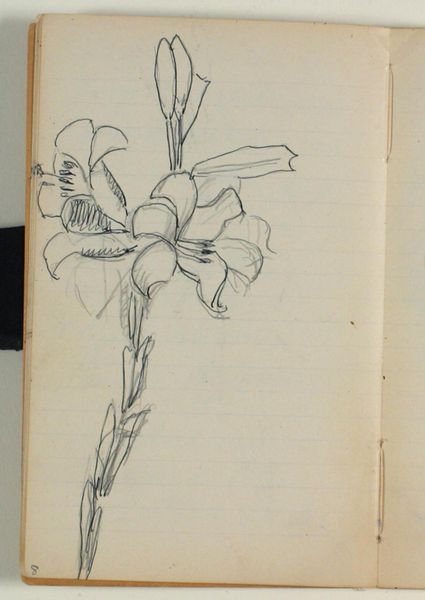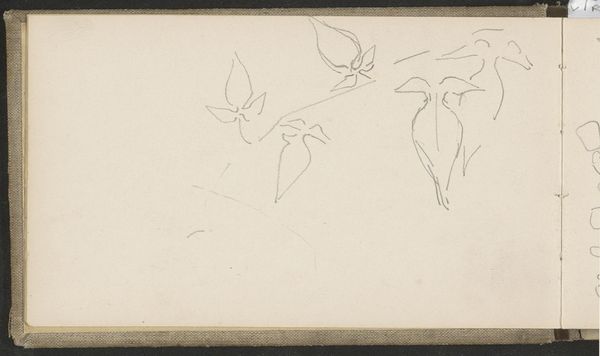
drawing, paper, ink
#
drawing
#
organic
#
paper
#
ink
Dimensions: 92 mm (height) x 174 mm (width) (bladmaal)
Curator: The sketch before us is entitled "Blomsterstudier", or "Flower Studies", a 1919 drawing in ink on paper by Niels Larsen Stevns. It is held here at the SMK, the National Gallery of Denmark. What strikes you immediately? Editor: It feels ephemeral, almost a fleeting thought captured on paper. The quick, expressive lines give it a raw, unfinished quality. It lacks the precision we might expect from botanical illustrations, opting instead for capturing the essence of growth. Curator: The lack of color is interesting, isn't it? Without the typical vibrant hues we associate with flowers, Stevns relies entirely on the suggestive power of line. What kind of cultural echoes do you observe? Editor: I see an element of democratization. Instead of a flawless, idealized flower meant to demonstrate the artist's technical mastery, Stevns offers us an intimate look at the everyday, at a hyacinth, labeled on the top right in Danish, in its unrefined beauty. He seems more interested in conveying a feeling, an experience, rather than sterile scientific precision. Curator: Indeed, and flowers have long served as powerful symbols in art history – commonly signifying cycles of life, love, and death. Could it be that here Stevns reduces it down to pure form? His simplified lines and dedication only to structure draw on primal images. Editor: Possibly, but even in its simplicity, the choice of flower matters. The hyacinth, known for its intense fragrance and tightly packed florets, could represent sensory overload or a period of intense experience being distilled down into memory. Think of the period in which it was created, post World War I and the new focus on organic imagery, rebirth, growth out of devastation. Curator: You bring up an essential consideration: this was made immediately following the trauma of WWI, making that new perspective toward imagery potentially filled with a desperate optimism in renewal. In limiting the color palette, perhaps Stevns focuses less on pure optimism and highlights what can remain when we have lost the vibrancy of a previous state. Editor: Right. Even in stark ink, the study provides hope, an important symbolic gesture amidst widespread grief. It reminds me of women who placed flower drawings in suffrage publications that called for renewed perspectives on liberty, hope, and peace. Curator: An elegant reminder of nature’s resilience amidst disruption. Editor: It is fascinating to contemplate the symbolism and its social context. A small drawing, but its potential resonance is wide-reaching.
Comments
No comments
Be the first to comment and join the conversation on the ultimate creative platform.

